|
|
|
|
|
|
|
|
|
 Posted: Tue Jul 19, 2011 9:53 pm Posted: Tue Jul 19, 2011 9:53 pm
Welcome to the IC Info Megathread. Here, in-depth explanations on characters' races/occupations/social status/environment
will be explained in a more expansive manner. Edits will be made as see fit.
|
 |
 |
|
|
|
|
|
|
|
|
|
|
|
|
 Posted: Thu Jul 21, 2011 10:25 pm Posted: Thu Jul 21, 2011 10:25 pm
RACESlolEngland consists mostly of humans however, that seems to be changing. More and more demons are forming contracts with humans; shinigami feign human identities while simultaneously soul reaping. Though unknown in number, there are also life-like dolls that walk the England streets, some taken on as companions and others alone.
OCCUPATIONSDuring the Victorian era, the majority of people worked in factories with gender being irrelevant. Men worked in labor-heavy jobs (ie: factory workers). However, some took on more professional, educated work (ie: physicians and teachers). Women had “lighter” jobs such as making clothes and working in households as maids or governesses. In the late Victorian era, women were allowed to do more jobs that were once only meant for men (ie: teachers, doctors, and office workers). However, we’d still like you to keep in mind your character’s gender when choosing their occupation because it does matter to a certain extent.
Children were also employed and worked just as much as adults did; they took on smaller jobs as assistants to adults or something only people with a smaller body size could efficiently perform (ie: chimney sweepers and factory workers). Unfortunately, most were paid very little for their labor.
Your character’s occupation does not have to be practical since there were bizarre jobs back then that dealt with the paranormal for example.

Currency: Currency was mainly broken down into the pound, shilling, and penny however, due to poverty, currency kept having to be divided until there were a multitude of different coins and notes. This made trade cumbersome because of all the confusing conversions. Some examples of basic conversions are below:
One Pound : 20 shillings
One Shilling: 12 pence
One Guinea: 21 shillings
Gold Sovereign: 1 pound
Half Crown: 2 shillings, 6 pence
Florin: 2 shillings
Silver Sixpence: 6 pence
Threepenny: 3 pence
+ Clothing Styles: For women, emphasis remained on the back of the skirt with fullness gradually rising from behind the knees to just below the waist, balanced by a fuller, lower bosom (achieved by a rigid corset). Skirts were looped or tied in various ways and worn over matching or contrasting underskirts with basques usually being worn during the day. Hair was usually pulled back at the side and worn in either knots or swept up at the top of the head. Bangs remained popular and were usually curled or frizzed over the forehead.
+ Men: Three piece suits, consisting of a sack coat with a matching waistcoat and trousers were a popular alternative to the contrasting frock coat, waistcoat, and trousers, which even the majority of the working class adopted. Shirt collars were usually turned over or pressed into “wings” while dress shirts were sometimes decorated with shirt studs and buttoned in the back. Accessories such as top hats, bowlers, and felt hats remained popular for casual wear while shoes of this era had higher heels and narrower toe.
+ Children: Though those in the working class were generally left with rags, those of a higher class had more options. Young girls would wear dresses with round collars and sashes. During the winter, girls would wear many layers as well as gloves or a muff hand warmer. A hat or bonnet was worn as well with long boots or shorter boots with gaitors. Older boys would wear knee-length breeches and jackets with round-collared shirts.
+ Social Events: The middle and upper class enjoyed doing several things to pass the time such as studying and reading. Women joined social groups though they did not play sports often (something that changed towards the end of the era). Men also joined social groups and societies where card games and gambling became popular. They played sports more compared to women although the more classy gentlemen enjoyed pleasure gardens. The poorer class also played games and games that they usually played were word games. In addition to word games, afternoon tea and evening parties were fairly common among the upper class. Tea played such an important part in daily life that tea dances became popular and ladies met potential husbands at the event.

+ Working Class
-They preformed unskilled labor and often had poor living conditions, didn’t follow the rules of the court, and rarely participated in social entertainment. For the working class, their living conditions were often unsanitary and overcrowded with no sewage or drainage systems. Children often had to work to support their family as well.
+ Middle Class
-In the middle class, it was generally men who provided the income with “clean” jobs such as banking or engineering. This class is the one that is the most steadily growing.
-Only women of the middle class have a coming out (completed their education and signified their availability for marriage)
-They read and studied society novels
+ Upper Class
-These were people whose wealth came from inherited land and included those of church and nobility. They would often host their own social events.
-Read and studied society novels
|
 |
 |
|
|
|
|
|
|
|
|
|
 |
|
|
|
|
|
|



